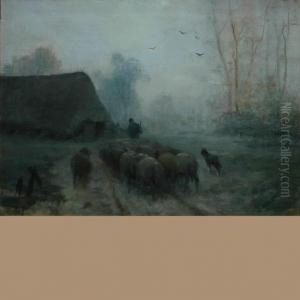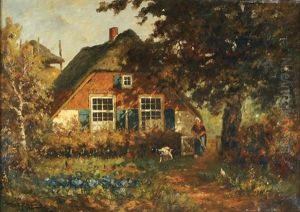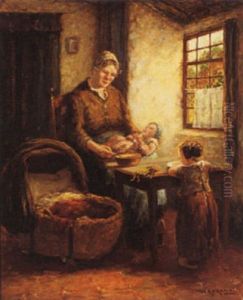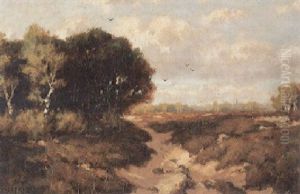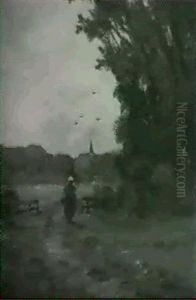Martinus Jacobus Nefkens Paintings
Martinus Jacobus Nefkens, born in 1866 in Rotterdam, the Netherlands, was a significant figure in Dutch art, particularly known for his contributions as a painter and graphic artist. His career spanned a period of immense change in European art, bridging the gap between traditional and modernist approaches. Nefkens' work, while not as widely recognized internationally as some of his contemporaries, holds a crucial place in the narrative of Dutch art history, reflecting the socio-cultural shifts of his time.
Nefkens' early life was steeped in the rich artistic heritage of the Netherlands, a country renowned for its legacy in painting. He pursued his passion for art through formal education, studying at the Rotterdam Academy of Fine Arts. This institution was pivotal in shaping the early development of many Dutch artists, offering a rigorous curriculum that emphasized both technical skill and creative expression. Nefkens excelled in this environment, honing a style that was initially rooted in the academic tradition but gradually evolved to incorporate more modernist influences.
Throughout his career, Martinus Jacobus Nefkens exhibited a keen interest in capturing the essence of his surroundings, often focusing on landscapes, cityscapes, and everyday scenes. His work is characterized by a meticulous attention to detail and a vibrant palette that captures the changing light of the Dutch landscape. Nefkens was adept in various mediums, including oil painting and watercolor, but he also explored the realms of graphic arts, contributing to the period's burgeoning interest in printmaking.
The turn of the century was a time of significant artistic evolution in Europe, with movements such as Impressionism, Post-Impressionism, and eventually Modernism, challenging traditional norms. Nefkens was part of this transformative period, and his work reflects the tensions and explorations inherent in the transition. He engaged with the innovations of his time, experimenting with color, form, and composition in ways that bridged his classical training with newer, more experimental approaches.
Despite the quality and depth of his work, Martinus Jacobus Nefkens did not achieve the same level of fame as some of his contemporaries. However, his contributions to Dutch art have been reassessed and celebrated in more recent years, with exhibitions and research highlighting his role in the development of modern Dutch painting. Nefkens passed away in 1941, leaving behind a body of work that continues to be studied and appreciated for its reflection of a pivotal era in art history. His legacy is that of an artist who was deeply connected to his Dutch heritage while also being receptive to the shifts in the wider art world, embodying the transition from the 19th to the 20th century in European art.






